Week 11 Overheads
Migration
What to Use to Know When to Go?
Light levels
Temperature
Food availability
Physiological changes
Endogenous clocks (circannual and circadian)
Advantages?
Disadvantages?
How to Know Where to Go?
Learned
Innate
Combination
Go the Distance
Time
- Interruptions?
- Irregular flight speed?
Metabolic energy consumption
Optic flow
Landmarks
Photoperiod and Circannual Clock
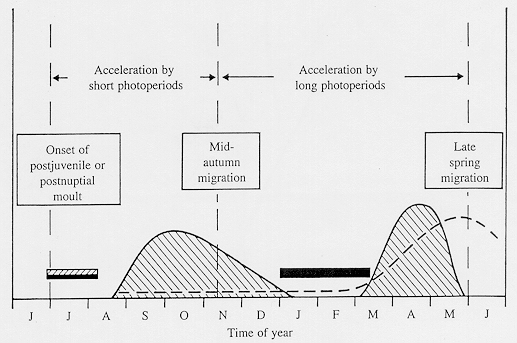
Accelerate by short and long photoperiods
Birth time/age
Distance to travel
Species differences
Where to Go the First Time?
Learned
Genetic
- Social and non-social
- Developmental changes
- Innate: 'vector orientation'
- Learned: 'site imprinting'
- Different populations, different vectors
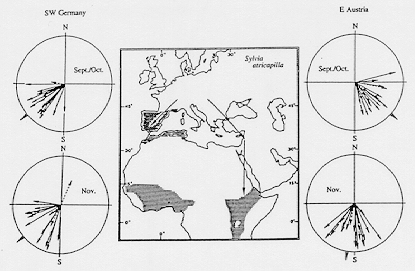
- Mix different gene groups...
- ...intermediate vector orientation
- Black caps
- One or few loci control vector orientation
- Rapid evolution
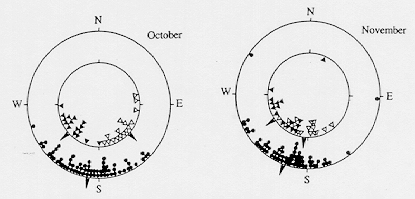
Features of Innate Vector Orientation
1. Geomagnetic field
2. Axis of celestial rotation
- Modifies (1) through interaction
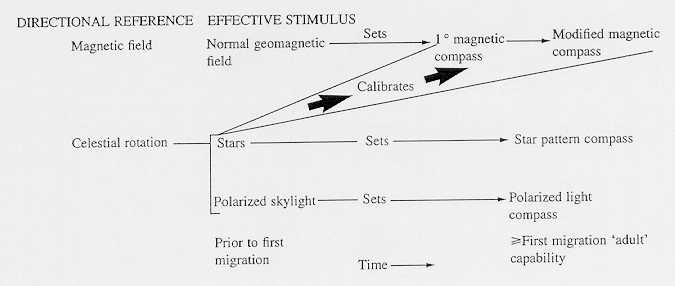
Night: star rotation
- Day: sun's path or polarized light patterns
Energy Constraints
To refuel...
- Barriers
- Time
- Risk (e.g., predation)
- New habbitat
...or not to refuel...?
- Time
- Energy (weight:cost)
Bird morphology and fuel load
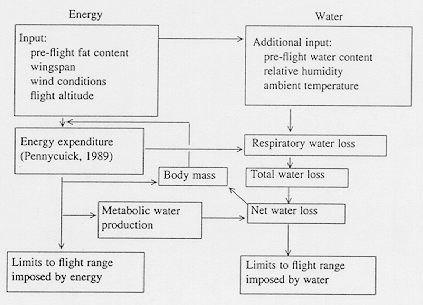
Considerations for Migrating Birds
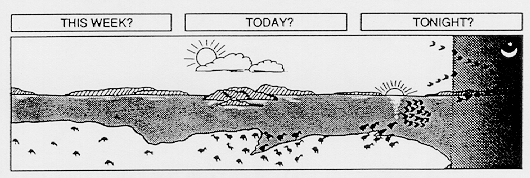
Open circles: energy/water constraint; Squares: navigational considerations; Triangle: correct seasonal timing
Considerations for Migrating Mammals
Can you think of some ways that the considerations of migration might be different for terrestrial mammals than for birds?
Return to 403 course page.






